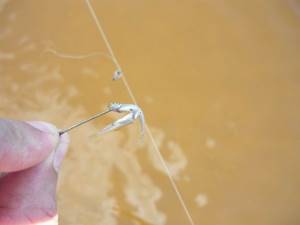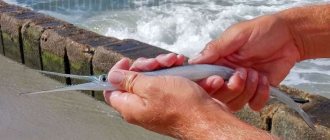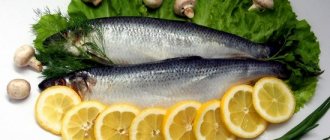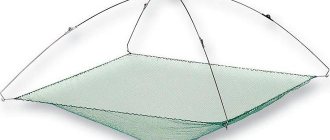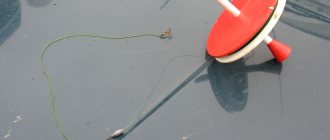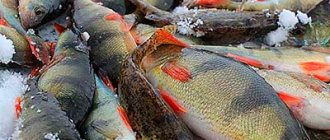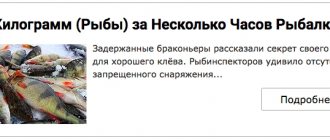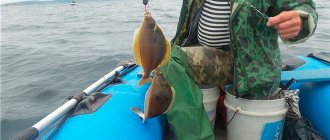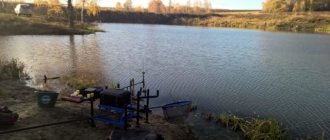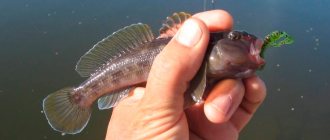Features of herring:
- On average, adults are 25 centimeters long and weigh about 350 grams.
- These fish live mainly in the seas, but in the spring they swim in large schools into rivers to spawn and from April to November they can be caught there.
- In May, the fish are hungry, so they are unpretentious in food. Taking this into account, experienced fishermen do not even use bait during this period, and bait is not needed.
- In the first days of the move, the largest fish are found (up to 1 kilogram in weight).
- It is allowed to catch herring only using spinning and float gear; other methods will be considered poaching. There is only one restriction for spinning - you cannot fish during the peak of spawning - from the end of May to the beginning of June.
- To catch herring with equipment other than spinning, you need a license, and for fishing from a boat it will cost more than from the shore. It’s not relevant to catch herring on a paid site.
Fishing rod equipment
The gear consists of a spinning rod up to 3 meters long and a plastic spinning reel.
Metal coils should not be used, as they are destroyed by salt water. A fishing line with a diameter of 0.4 to 0.8 mm is wound onto the reel. To the end of the fishing line, a thinner piece of fishing line with a diameter of 0.3 and a length of 1.5 - 2 meters is attached to a swivel using the carabiner method. A load weighing from 50 to 150 grams is attached to this segment. Weight depends on the strength of the current. Leashes with hooks are attached to the fragment. The length of the leashes is approximately 3-5 cm. They are knitted at a distance of 10-15 cm from each other. The thickness of the leads is 0.25 mm. You can read how to tie leashes to the main line in this article. The number of hooks can be from 5 to 8.
Time and place of fishing
The most interesting places for gambling fishing:
- In the Black Sea;
- On the Don;
- On the Volga.
There are rumors that Astrakhan will soon introduce a bill banning herring fishing for private individuals.
When to catch?
The herring movement at the mouth of the Don begins in April, when the water warms up to 8-10 degrees. The large form comes in first, then the smaller one. The most active passage of fish is in May; spawning occurs from mid-May to August. The eggs are spawned by the current in the river bed, we will pay attention to this later.
Calendar of herring runs in the lower reaches of the Don
| Event | Period | Water temperature, ºС | |
| 1 | The course of the first large shoals | mid-April | 8 — 10 |
| 2 | Period of entry into the river of large form | until early June | |
| 3 | Period of entry into a shallow river | end of April - July | |
| 4 | Most intense move | May | 15 — 17 |
| 5 | Spawning | second half of May – end of June | 17 — 20 |
| 6 | Small-scale transition from the Sea of Azov to the Black Sea | Aug. Sept | |
| 7 | The transition from the Sea of Azov to the Black Sea in large form | October – early December |
We invite you to read: Spinning for beginners: how to choose a spinning rod, spinning fishing technique
The given data may vary depending on the weather, especially the prevailing winds at any given time. A strong high wind blows water from the river into the sea and delays the entry of herring into the Don. Low winds, on the contrary, can speed it up.
Spawned herring - the so-called runner - actively hunts on the surface of the water. Herring loses its culinary qualities after spawning, but serves as an excellent object for sport fishing.
Where to fish?
They catch herring from the mouth of the Don to the dam of the Tsimlyansk Reservoir. Before its construction, fish were able to travel hundreds of kilometers upstream and had significantly more spawning grounds.
There are places where the herring lingers during the move, and they are the most promising. Now the best places for catching herring, according to fishermen, are in the vicinity of Semikarakorsk and Konstantinovsk.
As we have already noticed, the Don herring stays in the riverbed part of the river, on the stream, more often in the middle and upper layers of water, less often in the lower ones. They catch it from the shore, bridges and piers, constantly changing the settings and position of the gear to search for a school.
Mainly artificial baits are used as bait - cambric, flies and spinners. More about this in the next section,
Herring
Table traditions in Anapa and the region are strong and diverse. Festive tables are rich in various dishes, but the main thing is always fish. Herring occupies a place of honor among the various delicacies in the field of gourmet dishes. There is nothing more delicious than glossy, buttery pieces of herring that melt in your mouth. This Black Sea delicacy serves as an excellent appetizer for your favorite Russian alcoholic drink. Fresh Black Sea herring is not inferior in taste to Norwegian fish, and in some components it even surpasses its relative.
Appearance
In Anapa you can find several types of herring. The Azov bellied herring, Azov or Kerch herring, as well as the Black Sea herring species, the hare, come to our region. The Black Sea herring has an elongated shape, a triangular head, the upper jaw is located at eye level, the eyes have small, fatty eyelids. The dorsal and other fins are short, the tail is fleshy with a small swallow-shaped fin. The back of the silver hare has a dark green or bluish tint, the sides have a pinkish tint. Regular Black Sea herring, which fishermen catch in Anapa, grow up to 20 - 30 centimeters.
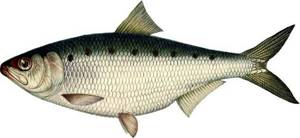
Kerch or Azov herring is similar in shape and size to Black Sea fish. The main difference between the Kerch herring and the hare is the presence of dark spots behind the gill covers. Another type of Azov herring is the Azov belly, a small fish about 15 centimeters. The body has a pronounced ventral keel, scales are clearly visible on the caudal fin, there is a spot behind the gill covers, sometimes there are up to 5 dark spots on each side. According to experienced fishermen, it is considered the most delicious fish in our region
Habits
All the herring that we love so much in Anapa are migratory fish. She is in constant motion. The movement occurs from feeding areas to the Black Sea, where the fish spend the winter. In the spring days when spawning approaches, the fish stop feeding and gather in large schools. In a cheerful company, the fish goes to the places where eggs are laid. Azov and Black Sea herring go to the Sea of Azov and to the mouths of rivers that flow into the Black Sea. Females lay eggs directly into the water, where they mature. Then, with the current, it tries to hide in safe places. Herring overwinters in the Black Sea. There is sufficient food supply, salt water, which is never covered with ice.
Interesting Facts
During spawning, the herring suffers from hunger so much that most individuals cannot stand this test. In addition, after spawning, the herring literally goes blind and can hardly find its way back. Therefore, some fish simply wash ashore and die. Herring is caught in Anapa, as is horse mackerel, at Samodur. A hungry fish rushes onto a bare, shiny hook. It is very difficult, even for experienced fishermen, to track the coveted fish. The catch is that the path and depth of the herring that crosses rivers and seas is always different.
Basic lures
Nickel-plated hooks are used. They retain their shine over many fishing trips. The herring bites much better on shiny hooks. For this reason, tinned hooks are not suitable, as they fade over time and do not shine as well as they should. Red woolen threads are wound on the hooks. You can also use green, yellow and blue. The main thing is that they are very bright. The threads are still knitted in a bunch. It turns out to be a small panicle.
Another bait that herring bite well on is an artificial fly or something similar to it. It's easy to do. A small feather from a turkey or duck is tied to the inside of the hook with a thread. It should be bright and shimmer in the sun in different colors, preferably dark ones. After winding, BF glue is applied to the thread. It will fix the feather well and it will stay in the water for a long time.
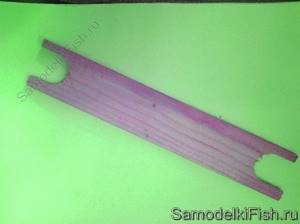
Another catchable bait consists of a small tuft of animal hair. This piece should be slightly smaller than the hook. It is tied to the fore-end with a bright thread. The result is a brush-shaped bait that glides well in the water and attracts fish. Catching herring with a tyrant will bring results if the fisherman has sets of such equipment.
On one fishing trip, you can try the entire arsenal of baits and find the most catchy one for fishing on a particular day. It is better to have about 10 fragments tied to the house with different baits. On some of them you can attach spoons with red and white colors.
Fishing methods and the most effective bait
As a rule, herring fishing is carried out in thick water, so they try to adjust the gear used to suit specific conditions. Herring bite both on animal and artificial types of bait. Proof of this is a spinning rod with bait in the form of a spinner or edible rubber.
Spinning fishing
Fishing for herring requires a rod up to 3-3.5 meters tall. The test range of the form is between 10-40 grams. Many anglers use telescopic models, but their use is only justified in narrow sections of the river.
For equipment you will need:
- sinker with a soldered swivel;
- several hooks with a long shank;
- colored wire insulation;
- silicone stoppers and swivels.
For fishing with a spinning rod, the most effective is considered to be a bait in the form of a hook covered with insulation. Most often they use white cambrics, which resemble fry in the water column. At the very bottom of the tackle there is a sinker on a loop, followed by leashes, the distance between which is 20-30 centimeters. Their length ranges from 10 to 15 centimeters. Each leash is attached to the main line using a swivel, pressed on both sides by a stopper. This allows you to increase or decrease the distance between the hooks. A simpler version of the equipment involves using the “loop-to-loop” fastening method. In this case, the torn hook can be quickly replaced by tying a new tackle.
Read: Bluefish: description, habitat, fishing
The wiring does not have complex nuances. The fisherman throws the sinker with leads as far as possible and, without lowering it to the bottom, begins jerking the line. Thus, the hooks go in thickness, one after the other. They act on herring like a school of fry running away from a predator.
Fishing with an elastic band
Many experienced fishermen use more compact types of gear, which include elastic. As a rule, it is cast from the shore, but installation using a boat gives more impressive results. To tear the hooks off the bottom, lovers of recreation on the pond use large foam floats. The design of the elastic band involves a shiny foil flag - a flasher. It perfectly attracts fish when playing in the sun.
Pieces of fish, meat, various offal, as well as insects that can be found on the river bank are used as bait. Particularly popular are the grasshopper and the leech. With the help of an elastic band, you can also fish with baits, constantly supporting the tackle.
The animation of the hooks consists of periodic movements of the angler's hand. The bite is felt “in the hand”, after which the obligatory hook follows. When there is good activity, several herring are caught, but not all specimens are sent to the cage, being sorted by size.
Many fishermen try to catch herring using matcha while fishing with fishing line. When there is fish in a section of the river, it bites on absolutely any bait and type of equipment.
Subscribe to
our channel in Yandex Zen
Which tackle and bait to choose
In spring, the fish are very hungry and active, they swim very close to the shore, so they can even be caught with a fishing rod from the pier. Experienced fishermen know that it is best to fish for herring from a boat, sailing a little from the shore to where the depth is from three to five meters. In summer it bites better at a short distance from the shore, and in autumn it’s the opposite. The best time of day in spring and summer is at dawn, and in autumn - in the afternoon.
We suggest you read: Fishing for carp: what grass carp bites on, what to feed it with
The gear for herring is quite simple - you can catch it with a telescopic or ordinary spinning rod. Reels and spinners depend on fishing conditions and casting distance, and a sinker weighing about thirty grams is suitable. If the bite is weak, then it makes sense to try several types of spoons in bright colors to find the most successful one.
Fishing process
How to catch a herring using a tyrant? In the Black Sea, herring is caught at a depth of 50 meters or more. It is advisable to have 200 meters of line on the reel, plus be sure to have a spare spool with wound line. The line is released from the reel until the load falls to the bottom. Then the spinning rod is sharply raised by 1 - 1.5 meters and a swing is made, similar to a sweep.
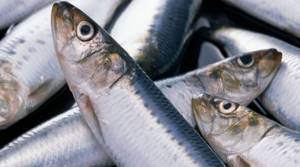
It makes sense to play with the length of the pause. It can be shortened and enlarged. If there are no bites at this depth, then raise the bait a few more meters. In fact, herring is mainly caught at depth. Therefore, you need to find exactly the bottom layer on which it will take bait well. If there is no bite, then you can try to reel it in.
The optimal time for fishing herring is evening and early morning. In the morning, fishermen usually don’t wonder how to catch a herring on a tyrant? They methodically fish promising areas occupied in advance by boat.
There is no point in catching herring during the hot day. She eats poorly and reacts sluggishly even to the best flies and spoons. On these hot days, it is better to catch it in the late evening or at night. When the bite is good, you can also fish with hooks tied with red threads or feathers.
The color of these feathers depends on the place of fishing. Sometimes she picks better on black and gray feathers, sometimes on red ones. Some fishermen tint them with bright markers. They say that they bite better on such feathers. All this can only be verified experimentally.
One pattern is worth highlighting. If the water becomes cloudy, then the herring takes better on red baits. An effective tactic is to alternate baits of different colors. For example, a gray feather is placed on one hook, a black feather on the other, and a red feather on the third. You can combine them with colors, choosing the most catchy options.
Often, fishing for herring indoors using tyrants is carried out by organized groups. One part of the fishermen fishes in the area where schools of herring are expected to move. The second part fishes at a considerable distance in a similar place. Whoever catches the first fish says at what depth and what gear the fish was taken with. The rest of the fishermen repeat his technique and thus manage to keep the school of fish in one place. The fish, having noticed the baits, begin to move between them, and slowly replenish the fishermen’s cages.
We suggest you read: Selecting the best lures for pike according to the season and fishing conditions
During bites, the hand feels a slight blow. The main thing is to determine which baits work best today. After the first strike, you should wait a little and give other fish the opportunity to hook onto the hooks.
As you can see, catching herring with a tyrant is a creative activity that requires the angler to have some experience and the ability to select the right equipment for each fishing trip.
Good fishing online stores will allow you to purchase any fishing goods at competitive prices!
Herring fishing
Winter is coming soon! shoals of herring begin to roam the open spaces around Sevastopol! It’s time to share the experience where. for what!
So, let’s get a little more detailed from this point, WHERE IS THE HERRING?
And on the topic, I offer you an article for your perusal.
?FOOLING? HERRING IN THE BLACK SEA
Our information
Most herring? a valuable fishery object, but there are species that are also available for recreational fishing. Representatives of the genus of oceanic herring are distinguished by the upper location of their large mouth, the absence of a central notch on the upper jaw, and a pointed belly; the rays in the anal fin are not elongated.
Several species of this fish are widespread in the Azov-Black Sea basin.
The most numerous in the herring family is the Black Sea herring of the Danube stock , which is usually found off the coast of Bulgaria, Romania, Ukraine to the western coast of Crimea, as well as in the southern open areas of the sea to Turkey. The bulk of the Danube herring stock is kept in the North-Western region of the Black Sea.
This is a fairly large schooling migratory fish, its length can reach up to 40 cm. In catches, specimens 22-32 cm are usually found. The body is spindle-shaped, elongated with short pectoral fins. The head is narrow, 0.21-0.26 times the length of the fish’s body. The mouth is large, the jaws are of equal length. The teeth are well developed. The back and top of the head are greenish-blue, the sides are silvery-white with a pinkish or purple tint. Spawning takes place in the Danube River. When migrating into the river, herring feeds poorly. Herring feeds on the seashore and in the fall rushes to the more southern parts of the sea, where it spends the winter at a considerable distance from the coast.
The first of our herrings to leave for the winter in the Black Sea is the Azov shad. This fish also belongs to the herring family. Its local names? garloskun, ploskunets, plastun, plastunets. The body is laterally compressed and shortened at the tail. The head is large, high, wedge-shaped. The mouth is big. The abdomen is laterally compressed and has a long keel from the throat to the anal fin. The caudal fin has two elongated scales. The body is covered with cycloid scales. The color of the back and upper part of the head is dark, the sides are light. On each side of the body there is one (occasionally 4-5) dark spot.
The little one lives up to 5 years. Body length up to 18 cm, weight up to 72 g. Enters the Sea of Azov in March? early April and is distributed throughout the entire water area, including in Sivash. Spawns in the lower reaches of the Don and in the desalinated estuaries of the Kuban. Spawning lasts from late April to June. The main feeding areas are located in the northeastern part of the Azov Sea.
Azov-Don herring also enters the Black Sea The body of this fish is elongated, the teeth are well developed. The color of the back and upper part of the head is blue-green. The sides are silvery-white with a purple or pink tint.
This herring consists of two forms? large and small. Both forms winter in the Black Sea. The large form with a small admixture of small ones is the first to enter the Sea of Azov. In the Kerch Strait its progress is noted at the end of March? early April. From late April to June, small herring migrate. Lives up to 10 years. The wintering migration of herring to the Black Sea is observed in August-September (small form) and in October-November (large form).
Azov (Kerch) herring , famous for its unique taste, also winters in the Black Sea The body is elongated, the eyes are large. The color of the back is green-blue, with a grayish tint. The sides are light and silver. The pectoral fins are light with a black upper edge. The lifespan of Kerch herring is up to 7 years. The maximum body length is 33 cm, and the usual length in catches is up to 26 cm. At the end of March it returns to the Sea of Azov. Mass entry is observed in April. Large mature fish migrate first.
?FOOLING? HERRING IN THE BLACK SEA
In late autumn and on fine winter days in the Black Sea, herring is successfully caught from boats using tyrants with white shiny hooks. The bet is similar to horse mackerel, but is made from stronger fishing line. Hooks, as a rule, are large in size with an elongated shank? 7?8. The distance between the leads is up to 30 cm. For quick immersion, the sinker is used in a streamlined shape and weighing at least 100–200 g.
Sometimes herring go well on bets with bare hooks, but it is better to use hooks with red threads or small colorful bird feathers tied to the shank on the back side, which should be slightly longer than the hook. Herring do not have a lateral line, so they respond well to color.
What color should the feathers be? There is no consensus among fishermen on this issue. It is believed that it is better to use feathers of different colors. Sometimes herring prefers red, sometimes gray, sometimes black. This is undoubtedly due to weather conditions, which affect visibility in the water. In addition, sea water at this time of year is often cloudy due to strong waves. It has been noticed that in muddy water, herring is more often caught on a hook equipped with bright red feathers...
It is better to alternate feathers of different colors: for example, the bottom hook is equipped with a red feather, a hook with a black feather is placed above it, and the next one is ? with gray, then the same sequence? red, black, gray, after which (if the bet is long) the combination is repeated.
Schools of herring fatten in different layers of the Black Sea: closer to the bottom, in the thickness or near the surface. Herring moves at different depths and under the influence of weather and sea water temperature.
It is not so easy to detect a school of herring in the sea, so they do not catch this fish alone.
Fans of herring fishing always try to go out in a group (10–15 boats). And first, a group of fishermen is evenly dispersed in the area where the schools are supposed to be located at a fairly large distance from each other. The one who catches the first herring tells other fishermen the depth at which it was caught. For example, the following exclamation is heard: “Ten swings, there is an initiative!?” Then all the boats are grouped around this fisherman, adjusting the gear to a depth of 15 m (swing length 1.5 m). This allows you to keep the herring in the fishing area.
The fish, noticing attractive feathers in different places, stops and begins to move in a circle, greedily pouncing on the bait.
When a bite occurs, a slight shock is transmitted to the angler’s hand, but there is no need to rush with the choice of tackle; it is better to wait for a few more fish to hook up.
You can catch herring throughout the day, but the most intense bite occurs in the early morning, at sunrise.
Prepared by Victor Efanov
How to catch herring
When fishing from a boat, you need to cast the fishing rod to the places where the school is supposed to pass, and you can choose the most successful place using the trial method - casting to different points. It is important to determine the depth of the school of fish - throw a spoon with a sinker and count down until it slides along the bottom. After the bite, immediately reel in the fishing line and again count down until the catch comes out of the water. If you manage to find a school of fish, then you need to cast a fishing rod and pull it out as quickly as possible, before the school swims away.
Experienced fishermen advise sailing a boat at least one hundred meters from the shore. When fishing from the shore, the bait is cast as far as possible. It is worth twitching the line periodically to provoke the herring to bite. Another method of fishing is with an elastic band (several hooks are attached to the line), but for this you need to know the place where the fish will pass and the depth. If the bite is inactive, then you should change the angle of the elastic band.
During the heat, it is very important to preserve the catch; for this, the fish can be placed in a concentrated saline solution. Water is filled into a bucket and 1 or 2 packs of salt are poured into it. The salt ratio is one kilogram per four kilograms of fish. In this form, the fish will not spoil. If you know some nuances, then fishing success will be ensured.
Herring and choosing a fishing area
The fish that gets hooked are rarely of trophy size. As a rule, the weight of herring ranges from 200 to 800 grams. Small individuals, of course, are released into the reservoir, adhering to the basic provisions of Russian fisheries and catch standards.

The fish has a laterally compressed body, the belly of which has a jagged edge. The scales are quite large and easily fly off when pressed. The head is proportional to the body, the upper jaw does not extend beyond the lower jaw, there are practically no teeth. Herring has small fins and silvery sides. The back is black, the belly is silvery-white. The fish feed on small crustaceans, worms and other organisms. You can also find fry of other fish species in the stomach.
Since the movement of herring occurs during the spawning ban period, its fishing is carried out from the shore. The fish move in large schools, so the bite is sporadic.
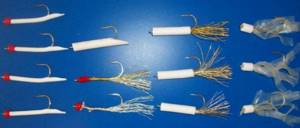
You can find a herring by external signs:
- the depth in the fishing zone must be at least 3 meters;
- Large concentrations of birds can be observed above the flocks;
- the presence of fish is also judged by the number of fishermen on the shore;
- fish are more often found in strong and medium currents.
Read: Golden Perch
For fishing you need to choose a comfortable place with good access to the water. Herring often catches right off the shore, so a small grab on a long handle will come in handy. Feeder models with a floating structure are perfect for these purposes.
Tree branches hanging overhead should not interfere with casting. Herring often follows the river bed and the number of bites depends on the range of the bait. At the same time, small specimens are often found near the shore, and the largest herring stands in the middle of the reservoir. The flock can move in any horizon of the water column, but most often it can be found at a depth of 2-3 meters from the surface. The herring is pursued by many birds, so many specimens that come across already have scratches on their back or sides.
The fish bite periodically throughout the daylight hours. Morning fishing is more preferable, since the heat rises during the day and it is unpleasant to be in the direct rays of the sun. Fishermen also come to the river in the evening, but at this time the entire bank can be occupied by fellow fishermen. The best way to catch herring is on a clear day with a wind force of up to three meters per second. When the atmospheric front changes sharply, the flocks sink closer to the bottom and do not show much activity.
Read: Fishing for halibut from a boat. Subtleties of plumb fishing
